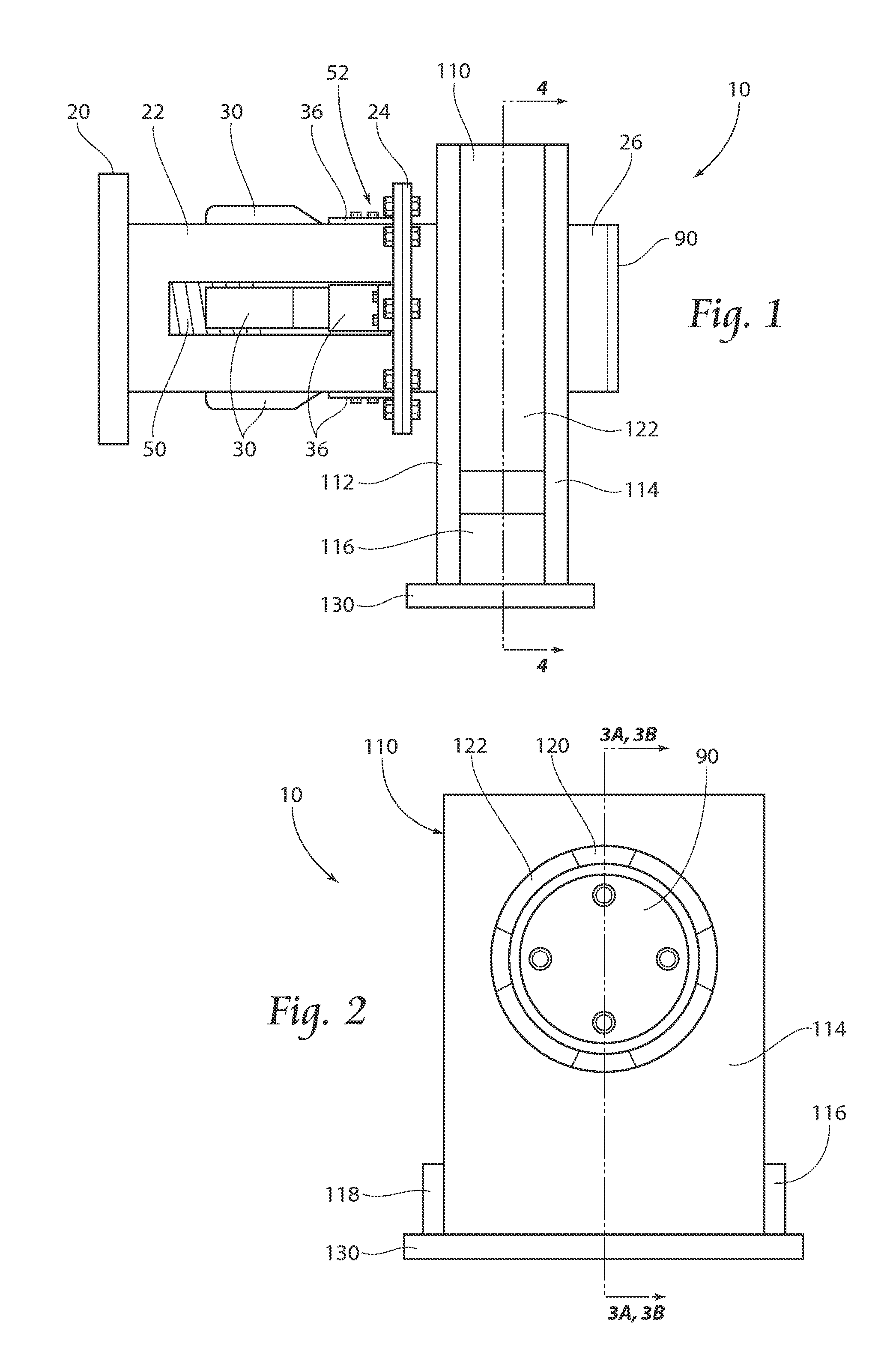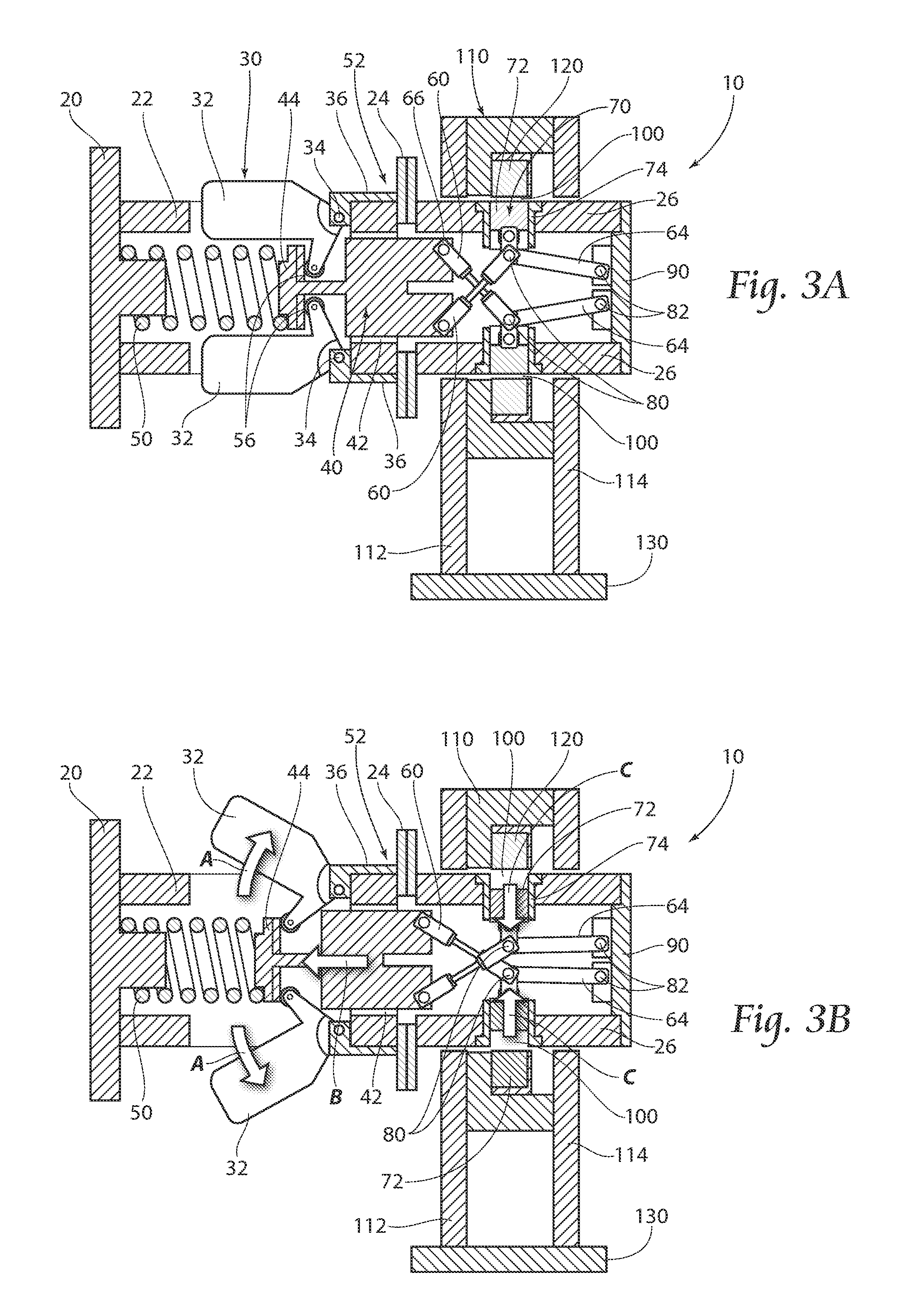Permanent magnet generator
a permanent magnet generator and magnet technology, applied in the direction of electric generator control, dynamo-electric converter control, dynamo-electric machines, etc., can solve the problems of potential reactor core meltdown, long-term irreversible environmental damage, danger to and loss of human life, etc., to increase speed, less flux density, and less flux lines
- Summary
- Abstract
- Description
- Claims
- Application Information
AI Technical Summary
Benefits of technology
Problems solved by technology
Method used
Image
Examples
Embodiment Construction
[0062]The permanent magnet generator 10 of the present invention couples to a source of rotational motion, such as a turbine. The permanent magnet generator consists primarily of two components including a rotor assembly 52 and a stator assembly 110. As shown in FIGS. 1, 2 and 5, the turbine mating flange 20 bolts to the turbine output shaft through flange bolt holes (not shown) or may thread on as per the turbine end shaft design, and also bolts to the inboard cylinder 22. Inboard cylinder 22 in turn bolts by flange 24 to the outboard cylinder 26 and forms the rotor assembly 52. The turbine bearings (not shown) support the permanent magnet generator rotor 52. The permanent magnet generator 10 stator assembly 110 supporting structure consists of a base 130, inboard stator bracket 112 and outboard stator bracket 114 forming a welded assembly with the stator wheel 122 affixed between the stator brackets 112 and 114. In operating position, the stator wheel 122 is centered about the rot...
PUM
 Login to View More
Login to View More Abstract
Description
Claims
Application Information
 Login to View More
Login to View More - R&D
- Intellectual Property
- Life Sciences
- Materials
- Tech Scout
- Unparalleled Data Quality
- Higher Quality Content
- 60% Fewer Hallucinations
Browse by: Latest US Patents, China's latest patents, Technical Efficacy Thesaurus, Application Domain, Technology Topic, Popular Technical Reports.
© 2025 PatSnap. All rights reserved.Legal|Privacy policy|Modern Slavery Act Transparency Statement|Sitemap|About US| Contact US: help@patsnap.com



